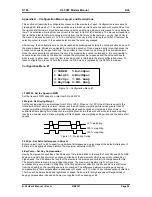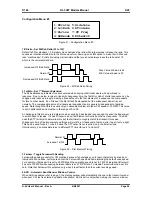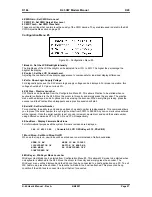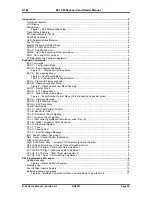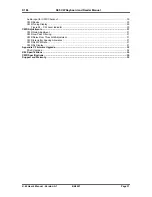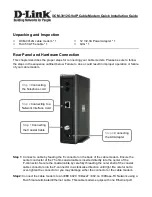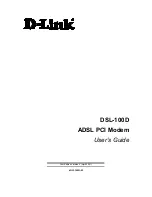
K1EL K45 CW Modem Manual K45
K-45 User’s Manual - Rev A
6/6/2021
Page 25
Configuration Menu #3
1:DDratio 5:Sidetone
2:1stExtn 6:STvolume
3:Farnsw 7:ST Freq
4:ASRmode 8:PDLwatch
Figure 21 – Configuration Menu #3
1:DDratio - Set Dit/Dah Ratio (33 to 132)
Default is 50 for standard 1:3. Smaller values decrease the ratio while larger values increase the ratio. This
causes an intentional distortion to the Morse waveform. Some ops use this option to make their CW sound
less “machine like”. Purists (including me) recommend that you should always leave the ratio set at 1:3
which is the universal standard.
Increased Dit \Dah Ratio
Normal R
Decreased Dit \Dah Ratio
Max Value Allowed is 66
Min Value allowed is 33
Figure 22 – Dit Dah Ratio Timing
2:1stExtn - Set 1
st
Element Extension
The K45 addresses problems often encountered when keying older transceivers with slow break in
response. Due to a slow receive to transmit changeover time, the first dit or dah of a letter sequence can be
chopped and reduced in length. Adding a fixed amount to the first element of a sequence can compensate
for this. In other words, if an R is sent the first dit will be elongated but the subsequent dah-dit is sent
normally. The compensation amount is transceiver dependent and is generally independent of sending
speed. Note though that this is usually only a noticeable problem at higher CW speeds >30 WPM. The value
is set in milliseconds and must be in the range of 0 to 99.
A challenge in this scheme is to determine when sending has stopped long enough to cause the transceiver
to switch back to receive. If it has it’ll require a new first element correction on the next sequence. The K45
uses the PTT tail timer to determine this, set the tail timer to roughly match the transmit to receive
changeover time of the transceiver and things will work fine. It takes some trial and error to get it set up right.
This can be used for port 1 or port 2 since the PTT output is not required, only the timer is used.
Unfortunately, it’s not possible to set a different PTT timer for port 1 and port 2.
Normal R
Increased 1st Dit
Figure 23 – First Element Timing
3:Farnsw - Toggle Farnsworth Sending
Farnsworth spacing is useful for CW practice because it encourages you to learn characters by sound not
individual dits and dahs. Letters are sent at the Farnsworth speed while maintaining the default code speed.
For example, if Farnsworth is set to 25 WPM and the operating speed is set to 7 WPM, individual letters will
be sent at 25 WPM while spacing between letters is at a 7 WPM rate. To disable Farnsworth mode, set it to
zero. Note that Farnsworth is activated only when it is set faster than the current sending speed.
4:ASR - Automatic Send/Receive Window Control
When ASR is enabled, refer to page 3, the display window will automatically change to the transmit window
whenever CW text is entered by paddle or keyboard. ASR is active only when viewing the receive window.












